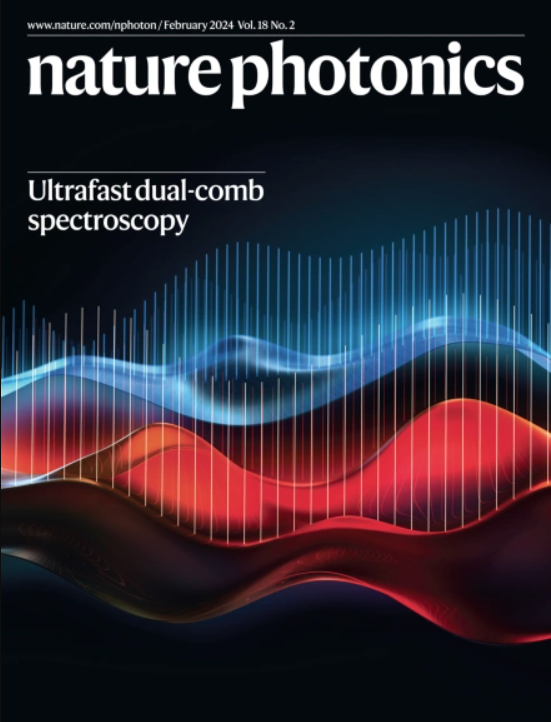Ångström-tunable polarization-resolved solid-state photon sources
IF 32.9
1区 物理与天体物理
Q1 OPTICS
引用次数: 0
Abstract
The development of high-quality solid-state photon sources is essential to nano-optics, quantum photonics and related fields. A key objective of this research area is to develop tunable photon sources that not only enhance the performance but also offer dynamic functionalities. However, the realization of compact and robust photon sources with precise and wide-range tunability remains a long-standing challenge. Moreover, the lack of an effective approach to integrate nanoscale photon sources with dynamic systems has hindered tunability beyond mere spectral adjustments, such as simultaneous polarization control. Here we propose a platform based on quantum-emitter-embedded metasurfaces (QEMS) integrated with a micro-electromechanical system (MEMS)-positioned microcavity, enabling on-chip multidegree control of solid-state photon sources. Using MEMS–QEMS, we show that typically broadband room-temperature emission from nanodiamonds containing nitrogen-vacancy centres can be narrowed to 3.7 nm and dynamically tuned with ångström resolution. Furthermore, we design a wavelength–polarization-multiplexed QEMS and demonstrate polarization-resolved control of the MEMS–QEMS emission in a wide wavelength range (650–700 nm) along with polarization switching at submillisecond timescales. We believe that the proposed MEMS–QEMS platform can be adapted for most existing quantum emitters, significantly expanding their room-temperature capabilities and thereby enhancing their potential for advanced photonic applications. A platform based on quantum-emitter-embedded metasurfaces with a microcavity that can be tuned by a micro-electromechanical system is demonstrated, enabling dynamic photon emission with narrow bandwidth, ångström-level wavelength tunability and polarization switching.


Ångström-tunable偏振分辨固态光子源
高质量固体光子源的开发对纳米光学、量子光子学等相关领域的发展至关重要。本研究领域的一个关键目标是开发可调光子源,不仅提高性能,而且提供动态功能。然而,实现具有精确和大范围可调性的紧凑和健壮的光子源仍然是一个长期的挑战。此外,缺乏将纳米光子源与动态系统集成的有效方法阻碍了光谱调整之外的可调性,例如同步偏振控制。在这里,我们提出了一个基于量子发射器嵌入式元表面(QEMS)与微机电系统(MEMS)定位微腔集成的平台,实现了对固态光子源的片上多度控制。利用MEMS-QEMS,我们发现含有氮空位中心的纳米金刚石的典型宽带室温发射可以缩小到3.7 nm,并以ångström分辨率动态调谐。此外,我们设计了一个波长偏振复用的QEMS,并演示了在宽波长范围(650-700 nm)内MEMS-QEMS发射的偏振分辨控制以及亚毫秒时间尺度的偏振切换。我们相信所提出的MEMS-QEMS平台可以适用于大多数现有的量子发射器,显着扩展其室温能力,从而增强其先进光子应用的潜力。
本文章由计算机程序翻译,如有差异,请以英文原文为准。
求助全文
约1分钟内获得全文
求助全文
来源期刊

Nature Photonics
物理-光学
CiteScore
54.20
自引率
1.70%
发文量
158
审稿时长
12 months
期刊介绍:
Nature Photonics is a monthly journal dedicated to the scientific study and application of light, known as Photonics. It publishes top-quality, peer-reviewed research across all areas of light generation, manipulation, and detection.
The journal encompasses research into the fundamental properties of light and its interactions with matter, as well as the latest developments in optoelectronic devices and emerging photonics applications. Topics covered include lasers, LEDs, imaging, detectors, optoelectronic devices, quantum optics, biophotonics, optical data storage, spectroscopy, fiber optics, solar energy, displays, terahertz technology, nonlinear optics, plasmonics, nanophotonics, and X-rays.
In addition to research papers and review articles summarizing scientific findings in optoelectronics, Nature Photonics also features News and Views pieces and research highlights. It uniquely includes articles on the business aspects of the industry, such as technology commercialization and market analysis, offering a comprehensive perspective on the field.
 求助内容:
求助内容: 应助结果提醒方式:
应助结果提醒方式:


